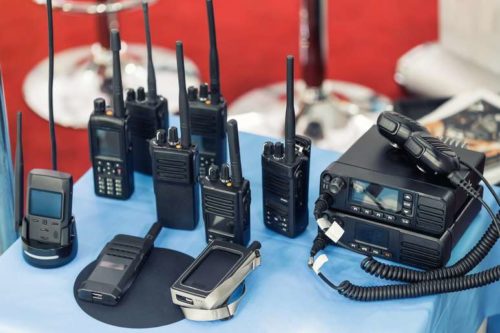The Fascinating World of Radio and Television Broadcasting and Communications Equipment Manufacturing
Introduction
Are you curious about the captivating history of radio and television broadcasting? Or perhaps you’re interested in gaining an overview of the industry? Look no further! In this article, we’ll provide you with all the information you need. We’ll delve into the various types of radios, explore the industry hierarchy, and even provide reviews of different brands. Grab a cup of coffee and let’s dive in!
Radio and Television Broadcasting and Communications Equipment Manufacturing Industry
Among the many industries employing a significant number of individuals across the United States, we have Radio and Television Broadcasting and Wireless Communications Equipment Manufacturing. While this industry might not enjoy the same level of popularity as some other businesses, it still employs a substantial workforce.
This industry is made up of a diverse group of professionals, including engineers, production staff, announcers, directors, editors, researchers, and administrators. Each of these roles plays a vital part in ensuring the smooth operation of the industry. Additionally, as a public service, broadcast stations are required by the FCC to address the needs of the local community, which can be found in the station’s public file.
Television Stations and Enhanced Services
Television stations have specific requirements to fulfill, such as airing identification announcements every hour. These announcements can take the form of on-screen graphics, closed captions, or other visual presentations, and must clearly identify the station using call letters, channel numbers, or other means.
In addition to regular programming, television and radio stations can also provide enhanced services. One such service is multicasting, which allows for the simultaneous availability of multiple programming streams. This means viewers can choose from a variety of options to suit their preferences.

Exploring Radio: Broadcasting and Communications Equipment Manufacturing
In today’s world of wireless technologies, the old-fashioned wired telephone may appear to be outdated. However, radio and television broadcasting, along with wireless communications equipment manufacturing, remains a thriving industry. It is a vital subdivision of the broader communications equipment manufacturing sector, encompassing the production of various communication devices, antennas, and interconnectivity equipment. Radios, receivers, transmitters, and wireless networking tools are just a few examples of the wide range of equipment produced by this industry.
Despite its relatively small volume, this industry holds a prominent position within the telecommunications sector. It accounts for a third of the market size in this sector, alongside several major players like Motorola and Motorola Solutions, Inc., renowned wireless telecommunications companies. With a market worth in the hundreds of billions of dollars, the wireless communications industry continues to witness technological advancements, evolving from its century-old origins.
Navigating the Radio Industry
Despite a sluggish economy, the radio industry remains a hive of activity, projected to create nearly 400 million new connections over the next twenty-five years. By 2025, wireless phones are expected to reach nearly three in every five individuals worldwide.
The wireless communications industry encompasses a wide range of interconnected systems, including wireless telephones, cellular and paging devices, low-earth-orbit satellite systems, and various other wireless technologies. Innovations in wireless personal communications services have fueled an increased demand for wireless networks and equipment during the early 21st century.
However, the industry faces challenges. Competition comes from fixed and mobile radio systems, digital television, and cable television. Furthermore, consumer electronics equipment has become more affordable and easier to manufacture over the past few decades. Notably, the industry is also home to defense contractors such as Motorola, known for providing handie-talkies to the Army during World War II.
The Journey of Radio and Television Broadcasting and Communications Equipment
During the early years, radio and television broadcasting and communications equipment were predominantly hand-built, resulting in poor quality recordings and inconsistent schedules. However, as technology advanced, equipment became more affordable, portable, and convenient, leading to a significant increase in the number of radio stations. By the 1920s, radio stations had become auxiliaries to primary businesses.
Radio broadcasting soon became an international phenomenon, serving as a trusted source of news, information, and entertainment worldwide. Industrialized nations began broadcasting by 1922, with countries like Japan, Mexico, France, and Norway quick to explore this medium.

The United States government recognized the potential of radio during World War I, considering it a strategic technology. The government regulated the radio spectrum and rationed it for specific parties. Big electric companies entered the radio market after the war, leading to the creation of the Federal Radio Commission in 1927. This commission enforced regulations by requiring broadcasters to obtain licenses, ensuring that the public interest was served.
Hierarchy: Navigating SIC Code 3663
Hierarchies aren’t exclusive to the workplace; they can be utilized in various areas. Whether you’re a businessman or an aspiring inventor, leveraging a hierarchical system can help convey your message efficiently. By employing this system, you can transmit vital information over the shortest possible distance with minimal complexity.
Hierarchical systems play a crucial role in upgrading digital broadcasting systems. For example, they enable the transmission of additional data equivalent to three channels or the distribution of information specifically designed for a particular receiver. Based on system complexities, you can strike a balance between performance and cost.
Fortunately, several companies provide guidance in utilizing hierarchical systems. These companies offer SIC codes, which serve as valuable resources for individuals seeking new equipment or planning to revamp their broadcasting setups. SIC codes can be obtained from reputable sources such as the Occupational Safety and Health Administration (OSHA).
List of Radio and Television Broadcasting and Communications Equipment Manufacturers
Broadcasting utilizes several means of distribution, including cable, satellites, and internet-based technologies. Some methods involve live broadcasts, while others rely on recorded content.
One relatively new method is webcasting, which employs the internet to reach a wider audience with a mix of traditional broadcast programming.
The first television broadcast was made by Philo Farnsworth on September 7, 1927. Mechanical television broadcasting by the British Broadcasting Corporation began in 1929.
Broadcasting has played a significant role in various forms of media, including books, movies, and more. Platforms like Wikimedia Commons offer a vast collection of media related to broadcasting. Broadcasting encompasses television programs, government-managed services, and radio programs. It even extends to transmissions through wires. It’s important to note that broadcasters are not telecommunication engineers.
Broadcasting technologies have the power to captivate listeners with breaking news and entertain them with a plethora of sound effects.
Several companies are involved in radio and television broadcasting and communications equipment manufacturing, ranging from well-known names to small businesses. These companies, listed by market capitalization, contribute to the continued growth of the industry.
The European Telecommunications Standards Institute (ETSI) plays a vital role in developing specifications for broadcast technologies. They collaborate with organizations like the European Broadcasting Union (EBU) to secure appropriate frequency allocations and equipment specifications. ETSI specifications cover television, internet, cable, and mobile communication systems.
If you’re interested in diving deeper, we recommend reading the following articles:
So, whether you’re a tech enthusiast or just curious about the world of radio and television broadcasting, we hope this article has provided you with valuable insight and sparked your interest in the fascinating industry of communications equipment manufacturing.

